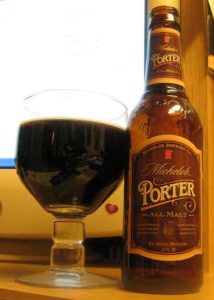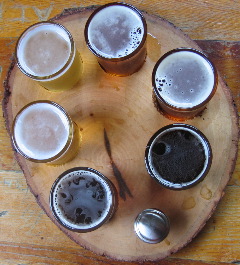A little bird, or rather an email correspondent, who was present advised me that at the recent Craft Brewer Conference there was a closed session at which at least one well placed big-mid-sized Midwest brewer “sure made for good entertainment at the voting members session of the CBC- you know, the one the toss the media out for”. Apparently, unlike what is seen on the public sessions, issues like the asymmetrical effect of tax breaks and grants are creating divisions amongst those who would like you to believe that they sing all from the same hymnal… and, then, would like to sell you the hymnal so you can keep in tune, too. Interesting, then, to read about one implication arising from this sort of thing as illustrated by one particular expanding good beer market, Ashville NC, as reported today by Bill Night at The New School:
If the $9 Mil for New Belgium that Magee mentioned sounds like a lot to you, maybe you’ll be interested to find that New Belgium actually snarfed up $13 million in total from “the public trough”, as explained in this post on the blog Ashvegas. As far as I can tell, Sierra Nevada wasn’t quite as gluttonous, and only needed a little under $5 million to set up beer camp in North Carolina:
– State of North Carolina: $1M grant to New Belgium
– Buncombe County: $8.5M tax incentives to New Belgium
– City of Asheville: $3.5M tax incentives and infrastructure to New Belgium
– State of North Carolina: $1M grant to Sierra Nevada
– Henderson County: $3.75M tax incentives and infrastructure to Sierra Nevada
You know who should be really pissed about all that money? The small brewers who built Asheville up into Beer City USA.
Redistribution of wealth is tricky stuff and it does not help that those receiving are national craft millionaires even though sometimes it seems they would like us to think that they are hunting for sofa change to try to make payroll. But it does not stop there today as Harry Schuhmacher in the Beer Business Daily touches on more of the questions left unanswered after the recent conference. He discusses questions of tax policy as I discussed here the other day as well as badly made and overpriced craft – and even how succession planning leading to big money buyouts are all discussed. All important big issues that can leave a bad taste… sometimes by actually leaving a bad taste.
But, most interesting to me is the “S” word – smugness. Harry puts it succinctly: “I’ve met a few new craft brewers over the last year, and I get the sense lately that many think they invented beer.” A great direct line. I can’t, however, speak to the truth of it as, being trained in the law, I assume this is a phenomena that is woven throughout all business sectors so I don’t know whether this is new to beer or that the guard has been left down a bit recently. Yet the other sources mentioned above might be indicating that might well be the case. Where does all of this lead? Good beer did well in the recession, expanding market share as the economy took a hit. But that does not mean the industry is immune to all risk.
For me, big business is big business and will act as such. Lobbying and entitlement will benefit the largest most. But the time needs to come when US craft will stop trying to pretend all brewers are small start ups even if only to argue for financing opportunities which can benefit businesses of different scales. Beyond that, the risk of fatigue needs to be addressed – and not fatigue of flagship beers as Harry suggests though that is happening too. Craft beer is starting to act like pre-teen soccer league where everything and everyone is special. Every brewer gets the medal. Every one gets the treat at the end of the game. In the case of craft beer, the treat is unending increased prices and increased sales forever and ever, amen. Nothing works that way.
Change will come and will likely be unexpected. Change may also be brought upon oneself. How would a brewer best situate itself to withstand a shift away from these present times of plenty? Admitting opening how things actually are might be a start.
 It is probably fair to say that my prediction of the demise of craft due to the stupid craft v. crafty mess was not entirely correct – unless we consider the health of its moral core. Could it be the smell back in late 2012 was the sign of things to come? Jeff may be getting his suspicions:
It is probably fair to say that my prediction of the demise of craft due to the stupid craft v. crafty mess was not entirely correct – unless we consider the health of its moral core. Could it be the smell back in late 2012 was the sign of things to come? Jeff may be getting his suspicions:


